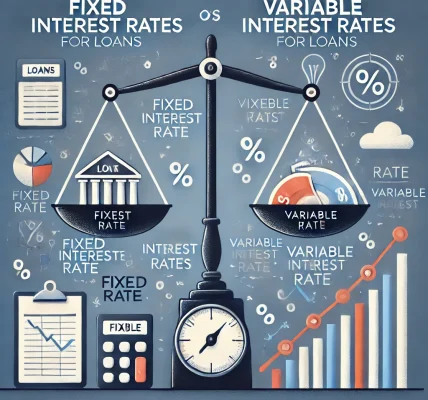Introduction
Loans play a crucial role in personal and business finance, allowing individuals and organizations to meet financial needs. However, before applying for a loan, understanding loan policies is essential to make informed decisions. In this guide, we will break down the fundamental aspects of loan policies, helping beginners navigate the world of credit with confidence.
What are Loan Policies?
Loan policies refer to the set of rules, terms, and conditions established by financial institutions regarding loan approval, repayment, interest rates, and borrower eligibility. These policies vary based on the type of loan and the lender’s requirements.
Key Components of Loan Policies
1. Eligibility Criteria
Lenders set specific eligibility requirements, including age, income level, credit score, employment status, and financial history, to determine if an applicant qualifies for a loan.
2. Types of Loans
Different types of loans come with distinct policies. Common categories include:
- Personal Loans – Unsecured loans for personal expenses.
- Home Loans – Secured loans for purchasing property.
- Car Loans – Loans specifically for vehicle purchase.
- Business Loans – Loans designed for business expansion or operational needs.
- Education Loans – Loans to finance higher education expenses.
3. Interest Rates
Interest rates play a vital role in loan affordability. They can be:
- Fixed Interest Rate – Remains the same throughout the loan tenure.
- Floating Interest Rate – Changes based on market conditions.
4. Repayment Terms
Repayment terms define the duration and schedule of loan payments. Borrowers must choose between:
- Short-term loans with higher EMIs.
- Long-term loans with lower monthly installments but more interest paid over time.
5. Loan Tenure
The tenure of a loan refers to the period over which it must be repaid. Shorter tenures reduce total interest but require higher monthly payments, while longer tenures increase the overall cost of borrowing.
6. Processing Fees and Additional Charges
Many lenders charge processing fees, prepayment penalties, or late payment fees, which impact the total loan cost. Understanding these charges helps borrowers avoid unnecessary expenses.
How to Choose the Right Loan?
- Assess Your Financial Needs – Determine the loan amount required based on necessity.
- Compare Lenders – Research different financial institutions and their loan policies.
- Check Interest Rates and Fees – Compare interest rates, processing fees, and additional charges.
- Evaluate Repayment Capacity – Ensure the EMIs fit within your budget without financial strain.
- Read the Fine Print – Carefully review the terms and conditions before signing any agreement.
Conclusion
Understanding loan policies is crucial for making well-informed financial decisions. By familiarizing yourself with eligibility criteria, interest rates, repayment terms, and other loan conditions, you can choose the best loan option that aligns with your needs. Always research thoroughly and seek professional advice if needed before committing to a loan.




